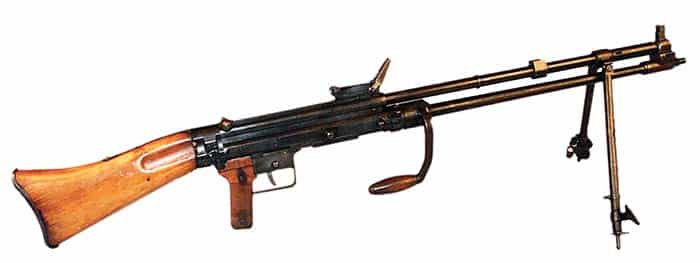By Jean Huon
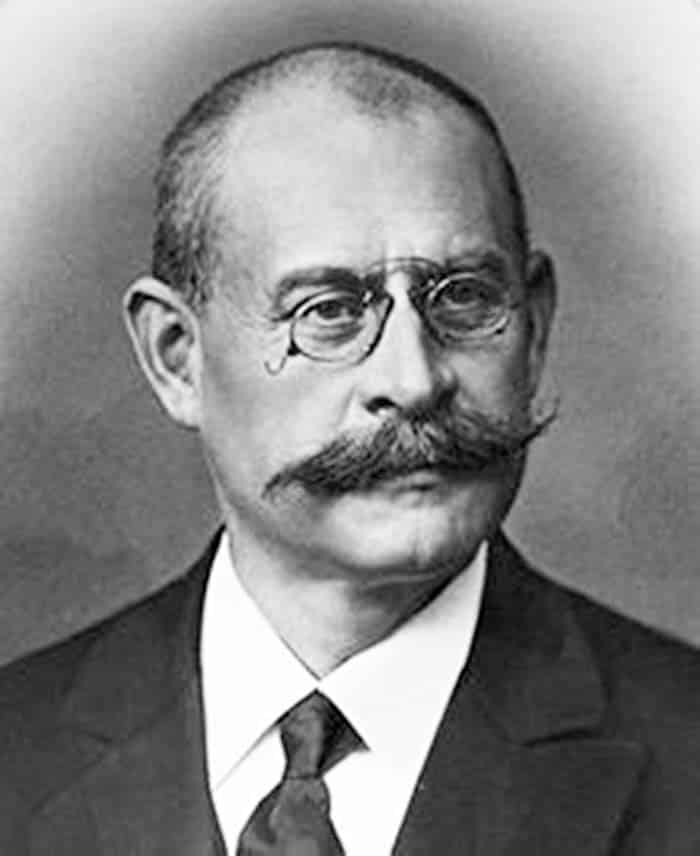
The history of Knorr-Bremse light machine gun LMG is a interesting, if a bit confusing ride through pre- and post-war European arms development. In the 1920’s Hans Lauf, a German engineer, was the director of a tool-machine factory in Magdeburg called Magdeburg Werkzeugmaschinenfabrik AG. It was founded in 1892. He was also interested in armament design and in 1923, he developed a device for a rotating turret to the benefit of Oerlikon in Switzerland.
One year later, Lauf struck a secret agreement with the Army of the Weimar Republic to develop new guns, something strictly prohibited by the Versailles Treaty after World War I.
He had a relationship with the Werkzeug Maschinenfabrik Oerlikon in Switzerland, the director of which was a former German cavalry officer named Emil Burhle, who was tasked to secretly develop a new small arms program for the German army.
In 1924, Magdeburg Werkzeugmaschinenfabrik AG bought Maschinenbau Seebach which had gone bankrupt and then both companies jointed Oerlikon. Seebach was also a firearms designer and the result of this merger greatly benefitted Oerlikon, as the company inherited all the information on small arms development from Seebach.
Emil Burhle bought, little by little, all the shares of Oerlikon, then became the main stockholder and director in 1929. During this time, Hans Lauf developed a light machine gun, designated LH 33, which was patented on November 22, 1933. But Oerlikon was not really interested in the LH 33 since its main objective was the development of automatic cannons, so the LH 33 patent was sold to Sweden. Like Switzerland, Denmark and the Netherland, Sweden had a privileged relationship with the German aircraft and arms industries.
Torsten Lindfors and Ivar Staeck, two Swedish engineers improved the LH 33 with new patents. But in 1935, the restrictions of the Versailles Treaty were denounced by Germany.
So, Hand Lauf developed a new variation of the LH 33, designated LH 35 in association with Wendelin Przykalla. As a sidenote, he was the director of the Knorr-Bremse company founded in 1905 at Bowhagen-Rummelsburg, near Berlin.
The company specialized in pneumatic braking devices for railway engines and trucks. But in the new Third Reich, all industrial enterprises were expected to take a part of the re-arming of the country.

Knorr-Bremse proposed some models of its new gun to the Wehrmacht, which had just adopted the MG 34 machine gun, but the LH 35 was also retained as the LMG 35/36 A.
The company was not successful in manufacturing the gun and decided to enlist the help of the Steyr Factory in Austria. Production began in 1939, and approximately 4,000 guns were manufactured. They were used by the Wehrmacht and the Waffen SS. Since Knorr-Bremse had influenced its development, small arms historians still refer to the LMG 35/36 A as the “Knorr-Bremse.”

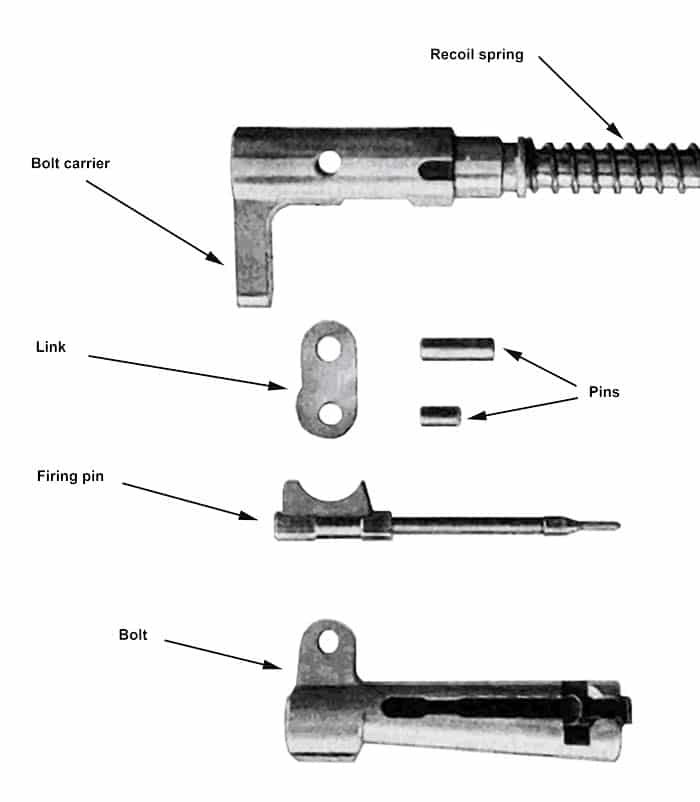
LMG 35/36 LAYOUT
The LMG has a long triangular wooden stock, which sets the shooter’s eye far away from the rear sight. The frame is cylindrical. It receives the barrel and a magazine on the left side. The gun has a single trigger and a large rectangular trigger guard. The controls are located on the left side, just over the trigger guard. It takes a 25-round MG 13machine gun magazine.
The gas cylinder is over the barrel and the recoil spring is in the same axis, located in the stock. The rod itself has an integral buffer. The cocking lever is on the right side of the frame. The bolt carrier is attached to a long piston.
The short barrel has no cooling device and its muzzle is fitted with a truncated flash hider that is easily changed. Along the side, there’s a handle for transportation and handling.
The front sight is protected by two ears, the rear sight is the same as found on the K98k rifle, but this one includes an anti-aircraft aiming device.
The action is gas-operated, and the bolt is locked with the carrier by a link. The bolt stays open before shooting. A bipod is mounted on the gas cylinder, with its legs folding to the rear.
The main drawback of this model is its low cyclic rate of 490 RPM.
MG 35/36 A Features
| Features | MG 35/36 A |
|---|---|
| Calibre | 7,92 mm |
| Ammunition | 7,92 x 57 |
| Overall length | 1,308 m (51.49″) |
| Barrel length | 0,391 m (15.40″) |
| Weight | 10,300 kg (22.70 lbs) |
| Magazine capacity | 25 shots |
| Cyclic rate | 490 rpm |
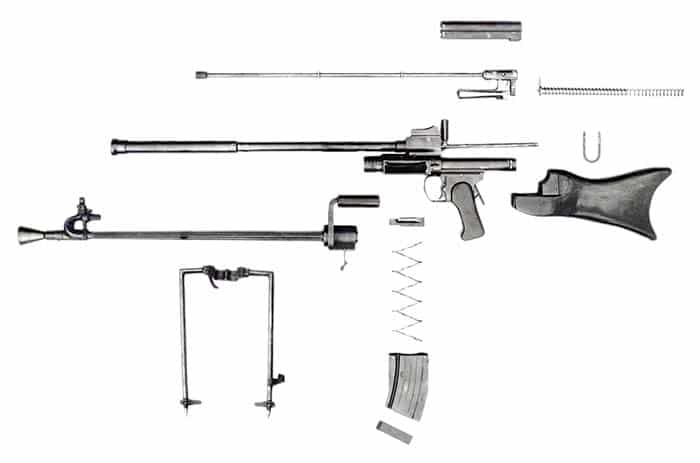
KG m/40 LAYOUT
The LH 33 was improved and adopted as the Kulsprutegevär m/40 by the Swedes, who secured new patents for its design. Its layout is the same as the German gun, but both models have no common parts.
It was built by Svenska Automatvwapen AB. 5,400 were manufactured; most were used by the Swede’s home defense force, some others by Danish and Norwegian troops stationed in Sweden during WWII.
The stock is shorter and made of wood with a particular shape. The pistol grip has asteel frame and has two wooden grip panels. The selector was removed and was replaced by a

double half-moon trigger which allows single shots or bursts, which was later discarded.
Initially, a grip safety was located at the rear of the pistol grip, but it was also discarded.
Feeding is performed by a Browning KP m/21 magazine, converted into a single stack magazine. It was necessary to improve the feeding lips and to lengthen the box to keep a 20-round capacity.
The sights are identical to those of the Browning LMG with a 200 to 1,200-meter rear sight (identical to those of the U.S. Enfield M1917 rifle.) The rear is located on the base of the gas cylinder. The barrel is easily replaced, and it has a handle.
One of the main features of the Swedish model is the gas port with two curved, metal pipes.
The gun has a particular bipod with two square legs which are front-folding.
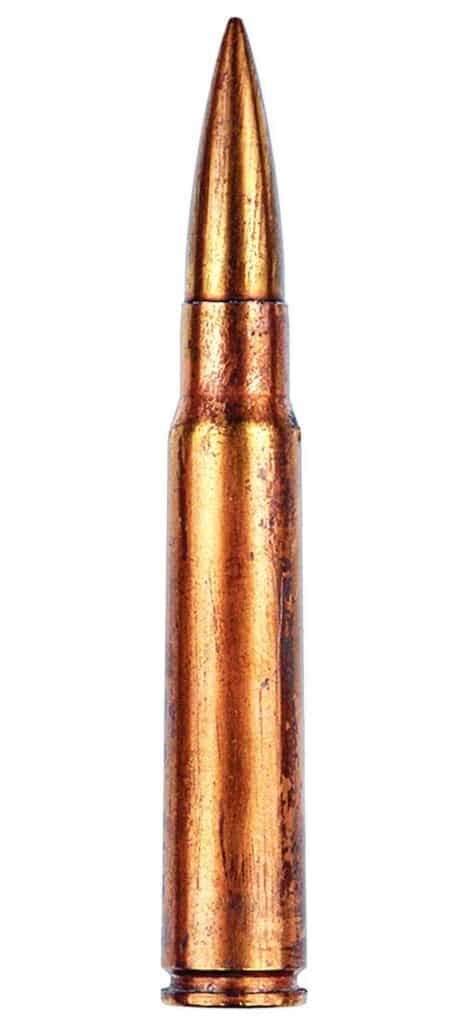
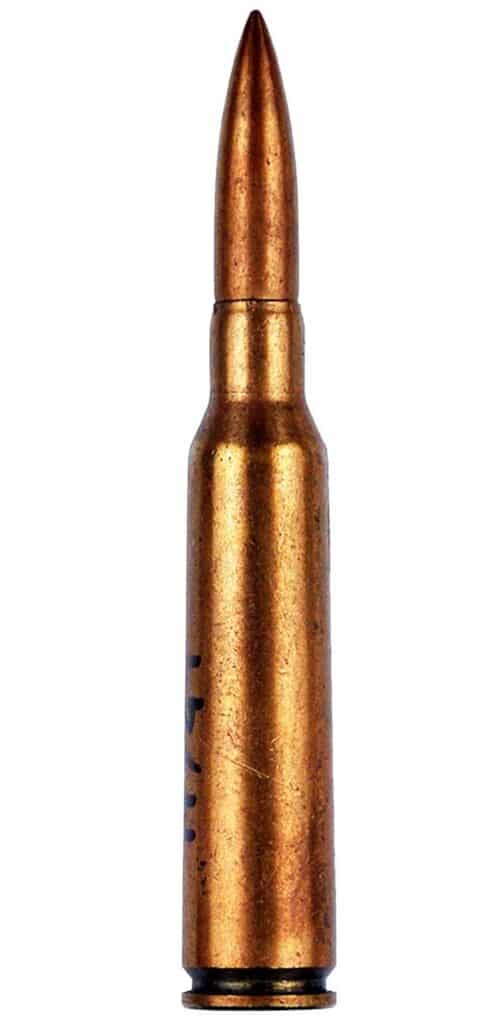
Kg m/40 Features
| Features | Kg m/40 |
|---|---|
| Calibre | 6,5 mm |
| Ammunition | 6,5 x 55 |
| Overall length | 1,257 m (49.49″) |
| Barrel length | 0,385 m (15.15″) |
| Weight | 8,500 kg (18.74 lbs) |
| Magazine capacity | 20 shots |
| Cyclic rate | 480 rpm |
DISASSEMBLY – ASSEMBLY
- The gun is made of 62 parts and is disassembled without tools. The process is the same with the German or Swedish Model.
- Remove the magazine and clear the gun.
- Extract the lock located at the rear of the frame.
- Stock and frame case are taken apart.
- Remove the recoil spring.
- Take out bolt and carrier.
- Unlock the barrel and take it off.
- Remove bipod.
- Reassemble in reverse order.
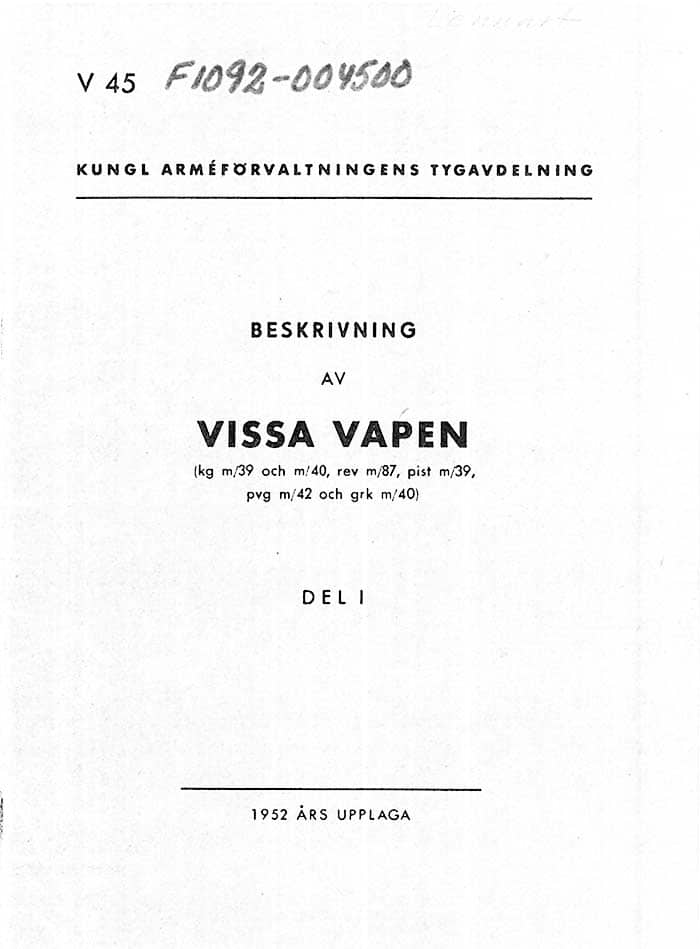
DISPLAY
The Knorr-Bremse LMG is a scarce weapon. After more than fifty years researching firearms, I saw only a few located at:
- Ordnance Army Museum in Bourges (France) ;
- National Firearms Collection, Leeds (Great-Britain);
- National Museum of the Marine Corps, Quantico (Virginia), U.S.A.
- Belgrade Military Museum in Serbia (incomplete).
Some also reside in military museums in Norway and Sweden.
Acknowledgment
The curator of Kungl. Armémuseum, Stockholm (Sweden).
Bibliography
The Machine Gun, George M. Chinn, Department of the Navy (1951).
Small Arms, Artillery and Special Weapons of the Third Reich, Terry Gander & Peter Chamberlain, Mac Donald and Jane’s (1978).
German Machineguns, Daniel Musgrave, Ironside International Publisher (1992).
MG 34-MG 42, Folke Myrvang, Collector Grade Publications (2002).
The Light Machine Guns of Sweden, O. Janson.
| This article first appeared in Small Arms Review V25N10 (December 2021) |



